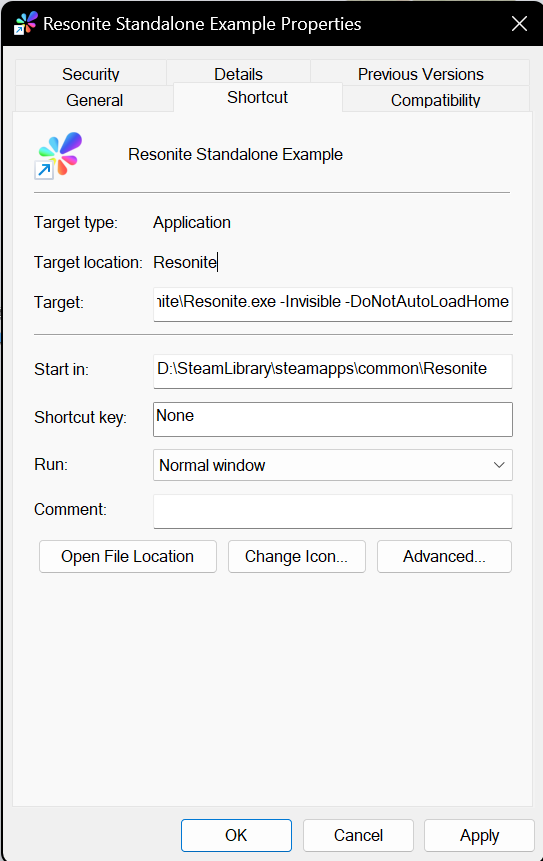m Neos -> Resonite |
m Add translate tags |
||
| (One intermediate revision by one other user not shown) | |||
| Line 1: | Line 1: | ||
<translate> | |||
=== Use a shortcut === <!--T:4--> | |||
<!--T:5--> | <!--T:5--> | ||
| Line 17: | Line 18: | ||
<!--T:7--> | <!--T:7--> | ||
Now, if Resonite is launched by double clicking on the shortcut it will launch using the custom options. These will not be applied if a different method is used to start Resonite. | Now, if Resonite is launched by double clicking on the shortcut it will launch using the custom options. These will not be applied if a different method is used to start Resonite. | ||
</translate> | |||
[[File:Shortcut_options.png|border|upright=1.0|<translate><!--T:8--> Setting custom launch options for a Shortcut</translate>]] | |||
[[File:Shortcut_options.png|border|upright=1.0|Setting custom launch options for a Shortcut]] | |||
Latest revision as of 05:52, 18 August 2025
Use a shortcut
It is possible to use launch commands via a custom shortcut targeting the Resonite.exe file.
To create a shortcut:
- Find the Resonite install folder and right-click on the Resonite.exe.
- In the context menu click 'Create Shortcut'
- Move the 'Resonite.exe - Shortcut' file to somewhere more convenient (such as the Desktop).
- Right-click on the shortcut file and click 'Properties' in the context menu.
- This opens a dialog window. Select the 'Shortcut' tab.
- In the 'Target' text box add a space after the Resonite.exe filepath and then add your command line arguments.
- Click 'Apply' and 'OK'.
Now, if Resonite is launched by double clicking on the shortcut it will launch using the custom options. These will not be applied if a different method is used to start Resonite.
